|
|
Post by Lee Martin on Feb 24, 2015 19:30:04 GMT -5
Colt Sharps falling block single shot, one of 500 made in early 1970's. This one chambered for .25-06. If you have experience with this arm, please chime in. 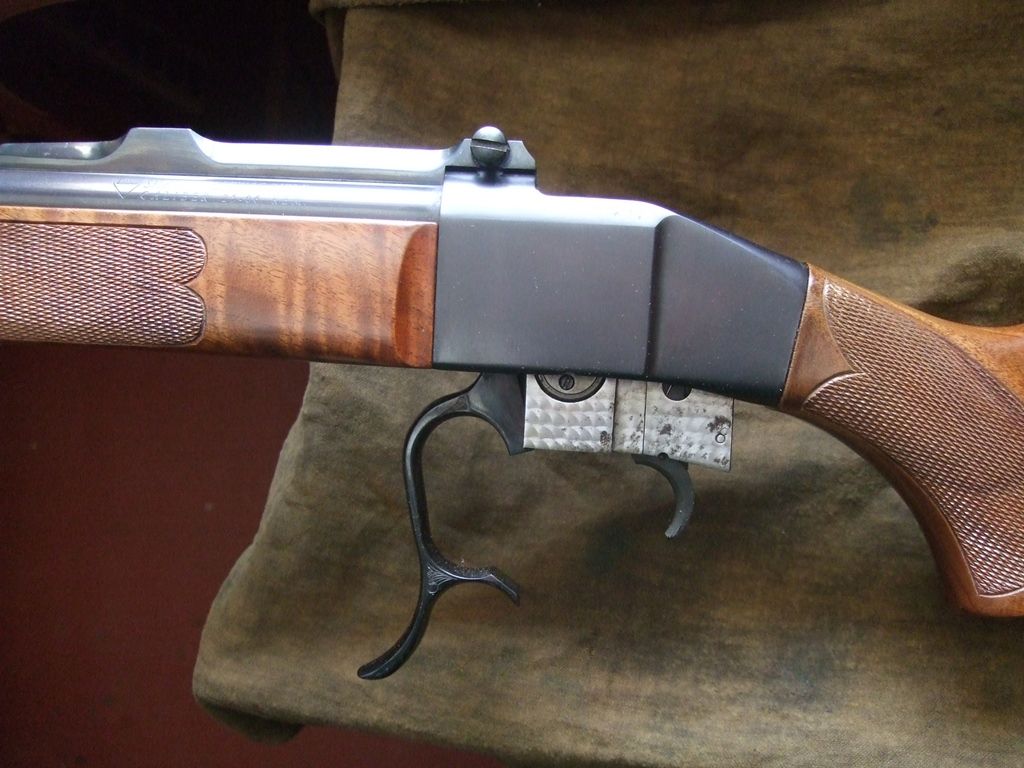 "Sharps Sporting Rifle"----bought by Colt's. 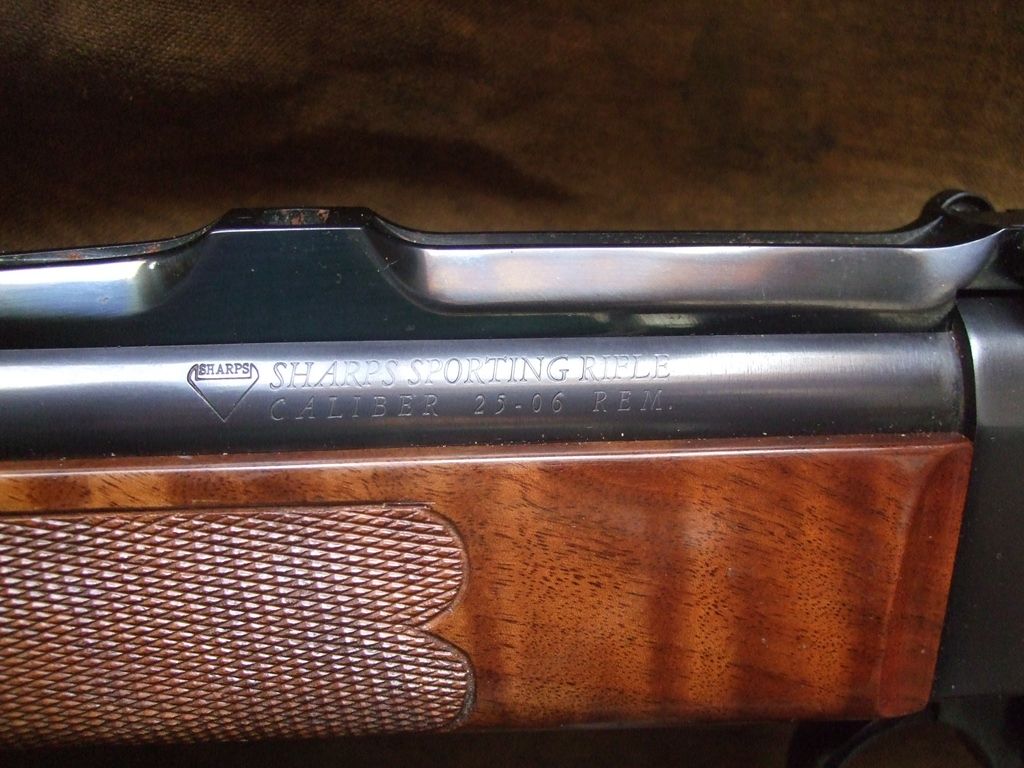 Timken roller bearings contribute to smooth lift and drop of breech block. 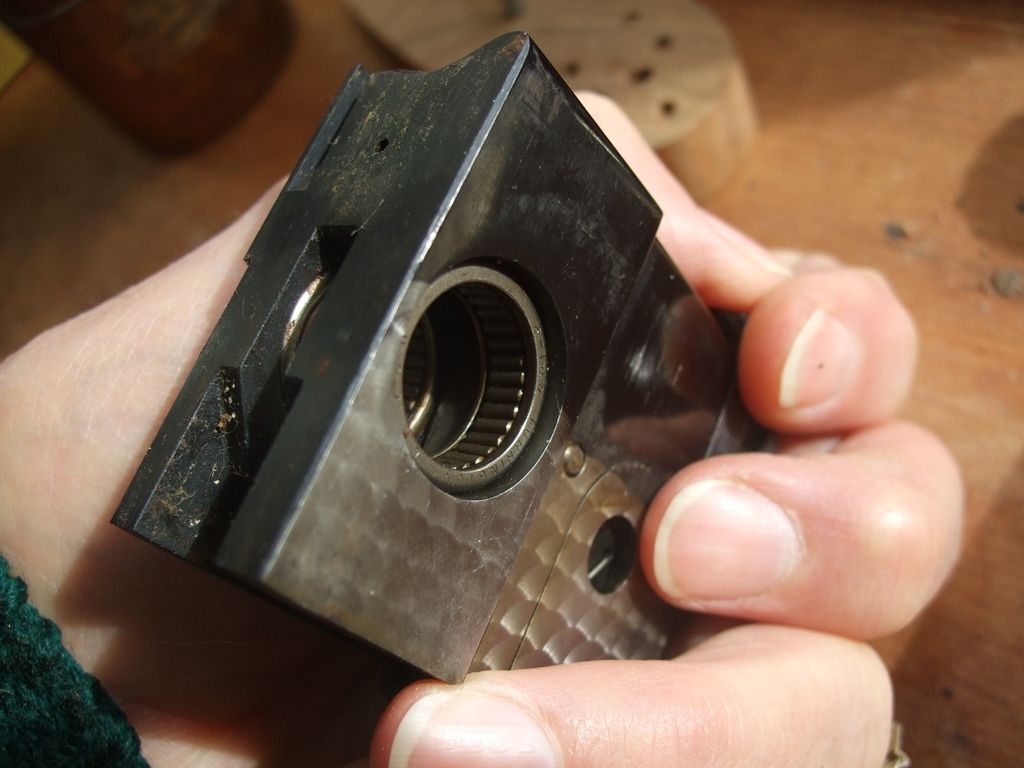 Closely fit falling block is smooth, should be strong as well. Cost more than twice the Ruger Number One at introduction. 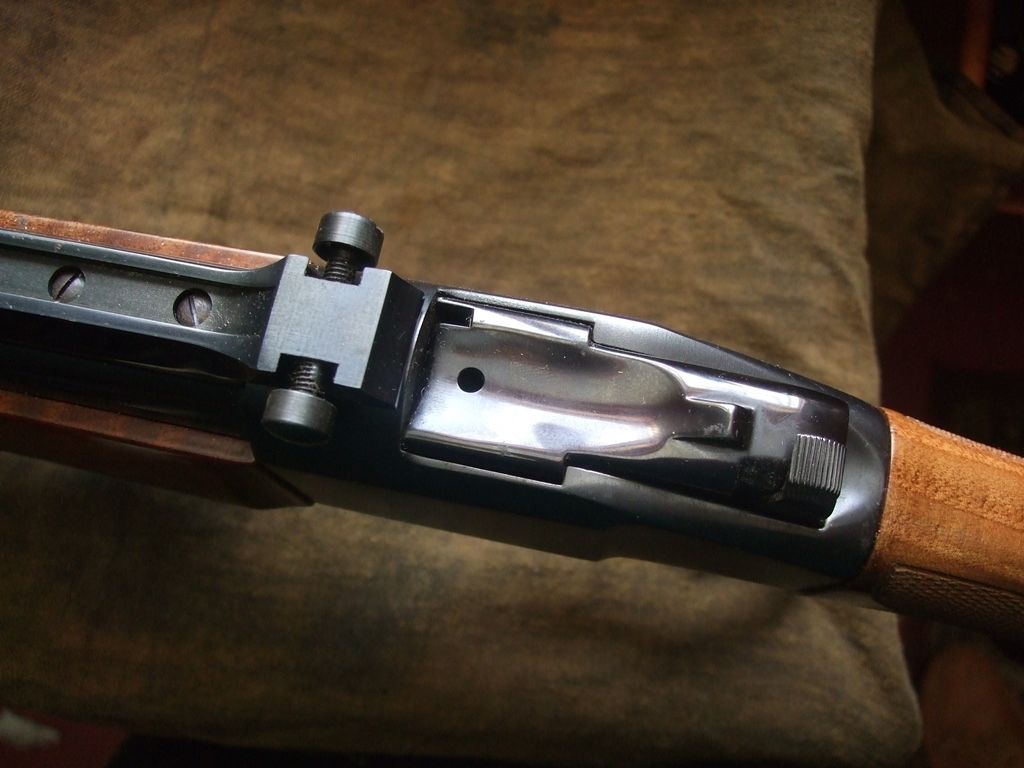 Sloped scope base resembles that of another ill-fated Colt caper, the smooth yet ridiculous toggle bolt Colt Sauer. 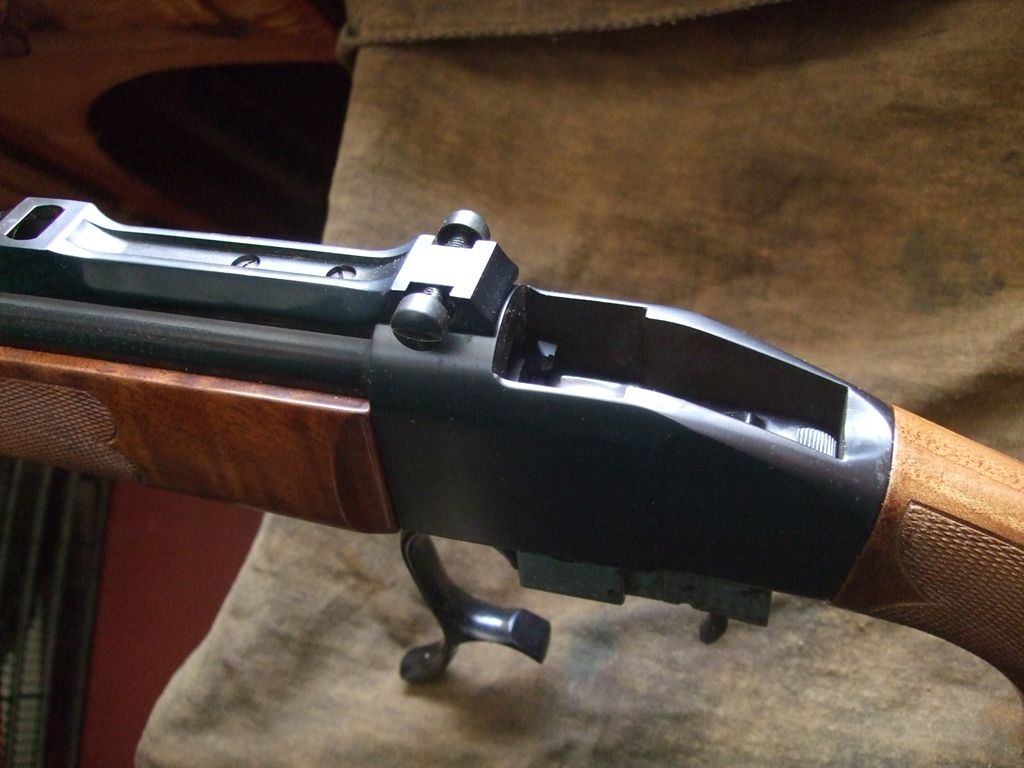 Excellent wood and checkering. 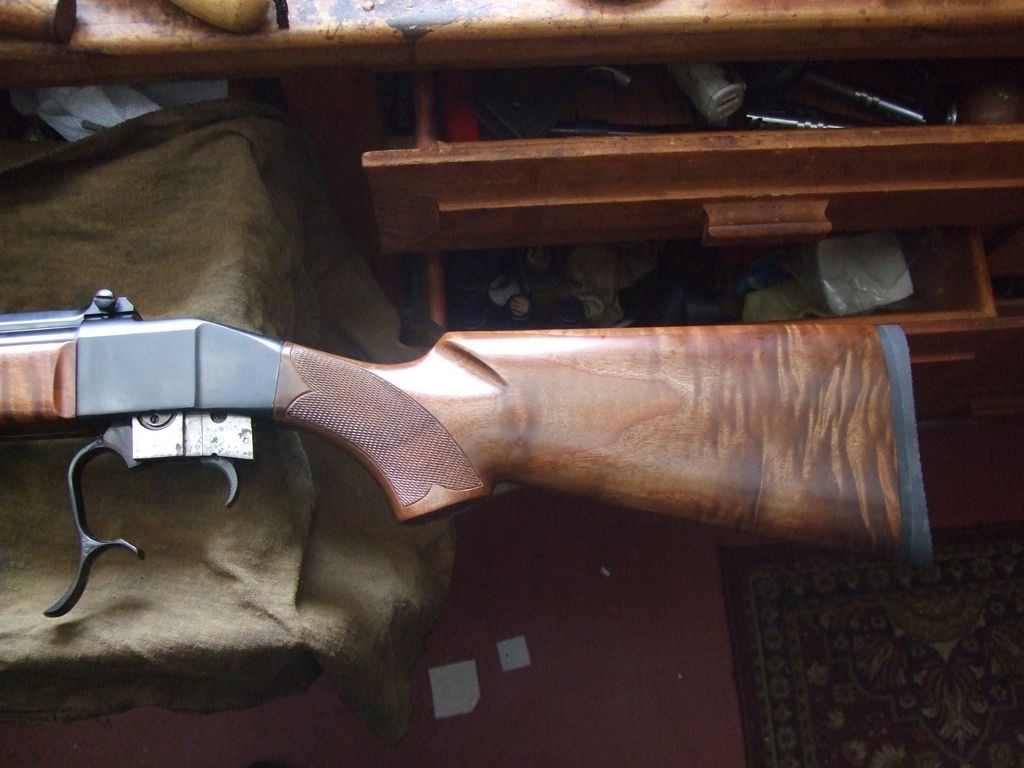 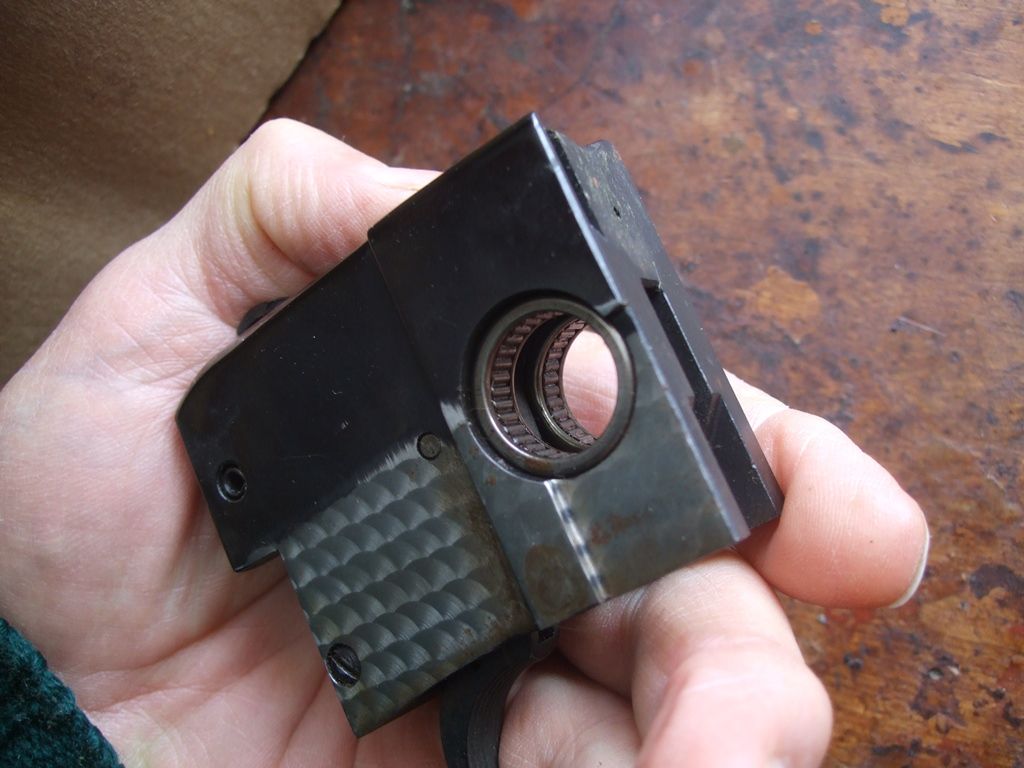 -Lee www.singleactions.com"Building carpal tunnel one round at a time" |
|
cmh
.401 Bobcat
  
Posts: 3,745
|
Post by cmh on Feb 24, 2015 19:43:22 GMT -5
Beautiful rifle and did not know Colt made them  |
|
|
|
Post by bradshaw on Feb 24, 2015 21:52:31 GMT -5
cmh.... Colt did not make this Borchardt Sharps, but bought the striker-fired falling block rifles from the manufacturer when Sharps Sporting Rifles company went belly-up.
David Bradshaw
|
|
|
|
Post by jayhawker on Feb 25, 2015 9:40:55 GMT -5
I remember the gun mag writeups at the time. I had to settle for a Ruger #1 barreled action from Ruger in 1976, special 200th year marked and Fajen wood.
|
|
|
|
Post by bradshaw on Feb 25, 2015 10:30:42 GMT -5
Done good, Jayhawker.... what caliber? When the Ruger Number 3 came out in .45-70 Springfield, my friend Ed Verge and I bought five. I kept two, eventually selling one. The little carbine was a monster, but I loved the little snake-lever without the lever-latch of the Number One. One day before setting out on a camping hunt, we put up targets at 100 yards to check our sight dope offhand. I outshot the little 18" .45-70 with my Smith & Wesson 8-3/8-inch 29, thus left the .45-70 behind. But there is no question the .45-70 Meatball Express is a hunting cartridge supreme. Because the Number 3 falling block is so strong, I pushed loads well past anything a lever rifle can take and it never sneezed. There is something about a good underlever single shot that inspires proper marksmanship. Anyone with any sense senses it. Which never stopped me from shooting the M1 Garand or a bolt action like it's a single shot that happens to shoot faster.
The manual motion of a smooth underlever sweetens one's mind and eyesight.
The Sharps Sporting Rifle carries a massive breech block, probably needed to house the striker-fired mechanism. Based on low production, reckon the Colt Sharps receiver and breech block are machined from bar stock. The work is beautifully done. I very much like the enclosed hammer and tang safety of the Ruger Number One and Number 3. Beautiful as the John Browning's Winchester High Wall is, along with modern reproductions, the Ruger is faster. That first shot often comes fast in the woods of the hind leg hunter.
David Bradshaw
|
|
dmize
.401 Bobcat
  
Posts: 2,834
|
Post by dmize on Feb 25, 2015 14:26:56 GMT -5
A good friend of mine had a #3 in 45-70.
Monster is an understatement. I don't remember what the exact load was but it flattened primers so bad there was hardly a seam left between them and the case.
One of our muzzle loading buddies was an aspiring Superman and despite the warnings he shot it off a bench... Took the hide off one elbow busted his nose and bloodied his lip and quickly deflated his ego.
|
|
|
|
Post by bradshaw on Feb 25, 2015 15:54:30 GMT -5
dmize.... a fine anecdote indeed. Superman's deflated ego hurt less than his skun elbow and mashed face. Nothing quite like physical pain. The little Number 3 carries across swamp and mountain lithe as a stick. That is, a stick with straight-grip stock fitted with buttplate borrowed from a Civil War rifle, thin 18" barrel, 6 lbs. soaking wet, probably stoked with----in the words of Blues maestro Muddy Waters----"tombstone bullets."
One day this half-pint character who packed and hunted with a S&W M-28 .357 Highway Patrolman visited. Saw me at work offhand with the Number 3. "May I try it?" says he. He was studying Tae Kwon Do and probably felt bigger than his modest frame allowed. Sure, I says, handing him the carbine and a round of .45-70 not to be dropped in a trapdoor. (Nor much else, short of a "Siamese" Mauser.) Now, do not try this at home, but a Hornady .458 300 JHP was seated over 46 or 47 grains of H110. For a student of Tae Kwon Do it seemed strange for him to assume the slouch of a punk smoking a cigarette on a street corner.
Ka---BLOOM! Number 3 carbine spins up over his shoulder in the arc of a lost propeller. Meanwhile the shooter, who was in front of me to my right, skids on his butt behind me. His education didn't require the extra rounds in my left hand.
Yes, the Number 3 was too much of a good thing. I would love to see the Number 3 return, restocked.
David Bradshaw
|
|
cmh
.401 Bobcat
  
Posts: 3,745
|
Post by cmh on Feb 25, 2015 16:55:03 GMT -5
|
|
|
|
Post by boltlug on Oct 18, 2015 1:27:12 GMT -5
This thread was started back in February, but I didn't see it until now, and I found it while searching for something else! I've been studying the 1878 Sharps Borchardt for some work that I'm doing on another forum. The Colt Sharps comes up as a foot note in that research because it was an attempt to create a more modern version of the 1878 Sharps. When designing the Colt Sharps, some of the short comings of the Borchardt design were addressed, and several of its classic features were retained.
The model 1878 Sharps was designed by Hugo Borchardt, (the same man who designed the first successful semiautomatic pistol), and was years ahead of it's time. In an era where firearms were using hammers and flat springs, the 1878 Sharps was striker fired, and used a coil main spring. The rifle would retract and cock the striker, and set the safety, every time the action was opened. It was the last rifle made by the original Sharps rifle company, and was very strongly built.
The model 1878 did have some drawbacks though: Because it was built in the black powder era, the receiver was made from un-hardened mild steel. The trigger remained stationary as the breech block opened and closed. This was accomplished by a series of parts and levers which had the effect of giving the Sharps Borchardt a rather heavy trigger pull. It was a fine rifle, but at the time of it's introduction lever actions were becoming increasingly popular with the shooting public, and with the decline of the buffalo, the demand for large bore single shots declined as well. Sharps tried to entice the military with the rifle, (which was superior to the trapdoor Springfield), but the 1871 Mauser had already shown the World the capabilities of the bolt action, and the die was cast.
Later, the model 1878 became much sought after as an action that target and varmint rifles could be built on. Case hardening solved the problem of the mild steel receiver, and several expert gunsmiths from the turn of the last century up until the Second World War devised methods to improve the trigger pull. At one point, a Sharps Borchardt rifle chambered in one of the 22 caliber wildcats based on the 30-30 case was considered both a top of the line benchrest gun, and also the highest quality in a varmint rifle.
There were only so many model 1878's built, and like other things that were once plentiful, (like the 30-40 Krag), there are now a lot fewer of them left. I don't know if it was Colt that came up with the idea, or if they bought it from someone else, but it was decided that they would produce a more modern up-dated version of the Sharps Borchardt rifle. When you compare the two, you can see several similarity's. The receivers have the same general shape. The mortise block opening in the top of the receiver looks very similar. They are both striker fired, and the striker resets by opening the action (The 1878 had internal cam plates to recock the striker, and it looks from the photos that are posted here that the Colt Sharps might recock the striker with an extension of the finger lever) Both rifles re-set the safety by opening the action (though the safety on the 1878 is on the bottom of the action, and it looks like Colt put theirs on the top).
The really big differences between the 1878 and the Colt is in things like the modern metallurgy, modern cartridge choices, and in the trigger mechanism. Because the trigger group on the Colt Sharps moves up and down with the breech block, it is freed from the caveats created by the complex leverage needed on the 1878. With the Colt design the rifle could have a superior trigger pull. The only other rifle that I would consider to be in the same class as the Colt Sharps would be the Story Striker, built by Al Story at Borchardt Rifle Company. The Colt Sharps is a very high end rifle, and is collectible. It makes an excellent single shot hunting rifle. If more had been built, the action would have also been suitable as the basis for a good target rifle. Unfortunately, then as now, the vast majority of the shooting public are interested in something else, and those who appreciate a quality single shot were not enough to keep the Colt Sharps in production.
|
|
|
|
Post by kings6 on Oct 18, 2015 15:13:15 GMT -5
I have had a love affair with single shots ever since my father went from his 1962 version of a Model 700 in 7 mag to a Browning B-78 in 7 mag. When he bought the 700 when they first came out he bought a small half page size loading manual that listed a load of 69 grains of H4831 with a 150 grain bullet and he found that load shot well in that rifle and he carried it right over to the 78. You won't find that load in modern load books but both our 7's like it and it is an accurate load even if it shoots noticeable faster and flatter it is quite the willowy hammer. Not quite like my cousins 78 in 45-70 with buckhorn rear sights and crescent butt plate but at least it is manageable. When he loads the short 45-70 for sneaking around in the wet NW timber looking for Roosevelt elk it turns into a Browning version of David's Ruger #3 45-70. Way more fun than I want to experience! I went on a B-78 collecting binge several years ago and ended up with octagon 25-06, 30-06, the original 7 mag and heavy barreled versions in 22-250 and the rarest which is the heavy barrel .243. AS kids tuition needs arose, they all found new homes except for the original octagon barreled 7 mag which will be passed down to one of my sons. I know the 78 does not have the classic lines of the 1885 version but it is still my favorite of the Browning iterations.  |
|
|
|
Post by bradshaw on Oct 18, 2015 19:34:39 GMT -5
Bolt Lug.... thanks for your informative look at the original Sharps Borchardt. Rise and fall of the Colt Borchardt breechblock defines smooth operation. As you imply, it has a rather massive receiver.
Kings6.... Took the son of a friend elk hunting some years back. He used his Browning M-78 in 7mm Rem Mag with tapered 28" octagon barrel. An elegant rifle, now probably a bit harder to find.
David .
|
|
|
|
Post by boltlug on Oct 19, 2015 0:01:44 GMT -5
For those who might be interested: you can still purchase most of the spare parts for the Colt Sharps, (including stocks), from Numrich Gun Parts.
|
|